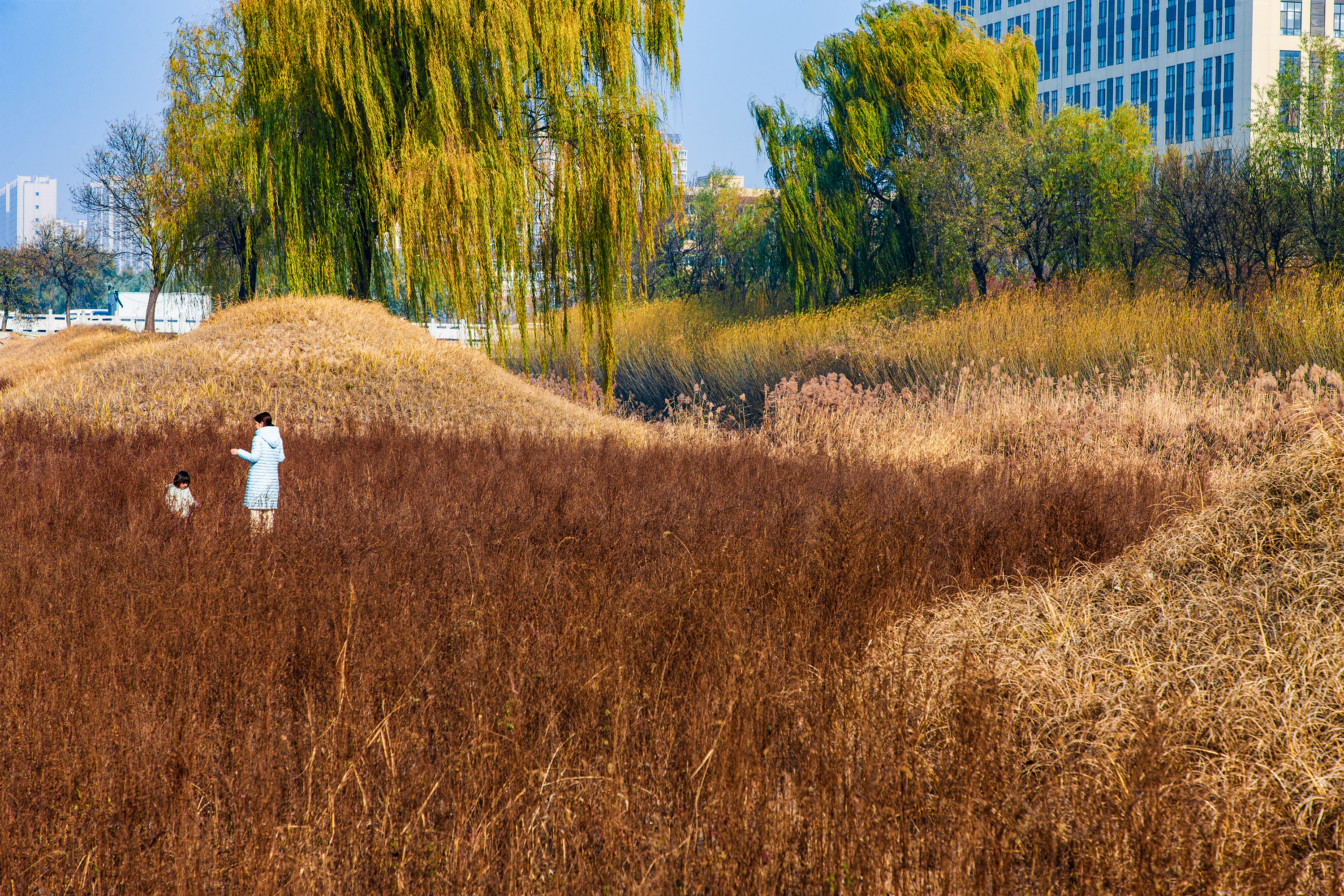
 technology
technology 
[ad_1]
I got a chance to observe Yu in his natural habitat that evening. He escorted me and Geng into the club through a set of engraved metal doors and across the courtyard, where the traditional stone floor had been replaced with thick glass. Inside he ushered us downstairs to a massive table underneath that transparent floor. As we sat in ornate, carved chairs sipping bright-green cucumber juice, I looked at the moon above. Finance ministers were also visiting the club that evening, so Yu rotated between our tables. Before we left, he gave me a souvenir: a heavy tome titled Designed Ecologies: The Landscape Architecture of Kongjian Yu. After dinner, his driver chauffeured us in a brand-new Mercedes minivan to my hotel, where Yu got out to walk home—his daily constitutional.
A week later I visited one of Turenscape’s projects in progress: Yongxing River Park, located in Daxing, a far-flung exurb of Beijing. “Before” satellite pictures from three years earlier showed a river straightened and confined by steep concrete walls. “Now” pictures were chock-a-block with buildings around a more generous, meandering path for water.
The project was nearly complete when I saw it. About two and a half miles long and perhaps two city blocks wide, the park follows the river. Workers removed concrete along the river channel and excavated soil to widen the riverbed. That dirt was then molded into a large berm running down the center, creating two channels. The river flows on one side; the other channel has big holes of varying depths that act as filtration pools. During the dry season, the filtration side is filled with partially cleaned effluent from a sewage treatment plant. Wetland plants in the pools clean it further, and the slow pace allows some water to filter underground. During the monsoon season, that channel is reserved for floodwaters, and the effluent is treated industrially.

TURENSCAPE
Geng and I walked a slim concrete path atop the central berm. Many of Turenscape’s designs feature walkways such as this, soaring above wetlands, so people can enter the landscape year-round and appreciate changes from season to season. The broader riverbanks, newly freed from concrete, are dotted with thousands of small sedges planted in closely set rows to hold the earth, like a pointillist-rendered landscape. We passed young willows, a native streamside plant that can survive flooding. Elsewhere, reeds, dwarf lilyturf, and other native plants stabilize the soil. Turenscape mostly uses native plants in its designs because they thrive on the water, weather, and nutrients available.
In summer 2020, during heavy summer rains, Yu sent me photos of Yongxing River Park. The trees and grasses had grown up considerably since I’d visited. The channel contained a lot of water but was nowhere close to overtopping. Turenscape does not yet have data on Yongxing’s flood capacity, infiltration rate, or water-cleaning services, but Yu called its management of that year’s monsoon a “great performance.”
[ad_2]
Source